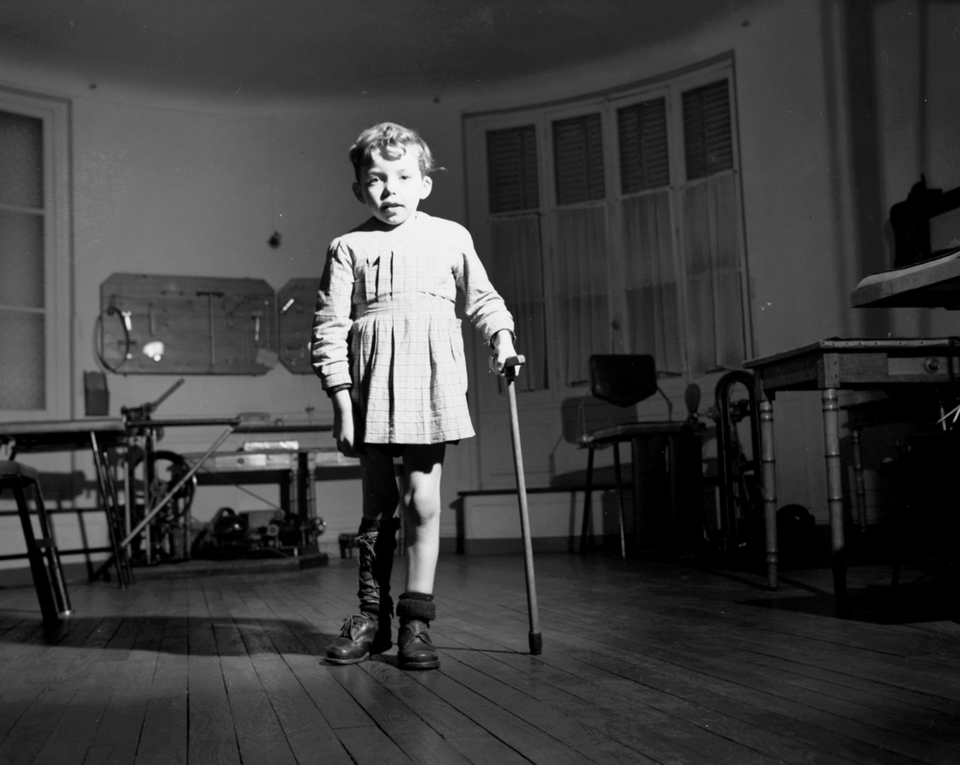🦀 PT Crab Issue 62 - Polio and Racism. A Heavy Hitter.

This week, we’re looking into the history of physical therapy and how polio cemented the profession in the early 1900s and an analysis of racial disparities in TKA rehab. Our King Crab supporters received two more articles this week, one about BFR use in COPD rehab and another about the world’s greatest database (IMO). Support us by subscribing to King Crab here.

Also this week, if you never watched Speed Racer back in the day, treat yourself to a Friday evening with some fantastic filmmaking. Especially if you’ve recently bought a new television, Speed Racer’s design and colors will blow you away, I highly recommend. It has nothing to do with PT, obviously, it’s just really good.
And lastly, take a sec to forward this to a colleague. They’ll be happy to receive it and I’ll be happy to have it received. And you won’t have six years of bad luck†. You guys are my only advertisement for PT Crab so if you like it, help it grow. And thanks!
And now, let’s dive in!
†Lack of bad luck not guaranteed, but probable.
How Polio Invented PT
The Gist and Tell Me More - The origins of physical therapy is more debated than one would think. There have been physical approaches to therapeutics since the word therapeutics was invented (thanks ancient Greeks!) but these authors in PTJ argue that the polio epidemic professionalized physical therapy starting in the 1920s. They specifically cite Henry Kendall and Florence Peterson, two PTs (one of whom, Henry, was blinded in World War I) who essentially invented the concept of a rehabilitative facility, then used it to treat hundreds of children with polio. They were very conservative in their approaches, but other PTs used their work as a jumping off point and began more aggressive treatment, especially those who worked with FDR at his Warm Springs resort in Georgia. The real star of polio treatment was Sister Elizabeth Kenny, an Australian (the best PTs always are) in Minnesota who trained nurses and PTs to mobilize patients, strengthen their muscles, and put these polio-struck people through tough workouts. This approach changed polio and PT forever.
There’s a lot more in the piece, but those are the highlights of a very interesting history. I try to bring history as much as I can get it to give us perspective on where PT has been and where it’s going.
Paper? Sure thing boss. Open access too. Which means there’s a highlighted version (where I guide you to the most interesting parts) here
In Arthroplasty Rehab, Racial Disparities? Not Apparently.
The Gist - This hopeful piece from the Journal of Arthroplasty (which is apparently a thing) dives into the Women’s Health Initiative data (one we’ve seen a lot of work from before) to figure out if there are racial disparities in total knee arthroplasty and the answer appears to be no. There are disparities in disability before arthroplasty, with Black women (this study is all women) getting TKA later and when more disabled than White women, but post-arthroplastic rehab disparities don’t seem to be a huge problem. Black women were more likely to be discharged to an institutional facility, more likely to receive home health PT services, and more likely to receive outpatient services than their White counterparts. When controlling for the differences in pre-arthroplasty disability, the researchers found that rates of referral to all three services appear to be equal, with no significant differences in referral found. Yay!
Tell Me More - Clearly, a highlight of this study is that Black women receive TKA later than White women, making their rehabilitations more difficult and that certainly needs to be addressed. That wasn’t the point of the study though, they were just looking at post-arthroplasty. A deeper look into the data from this study reveals that not only were Black women referred to PT services equally often (controlling for their functional status) but they also were equally likely to use the services they were referred to. Yay again! The findings in this article really shift the focus from post-TKA to pre-TKA. It’s time to start getting Black women in the OR sooner so they have a shorter distance back after TKA.
Paper? Here ya’are. Also open access, meaning also highlighted version here.
And that’s our week. Yay! And it’s only 86 days ’til Christmas. Double yay! This part is specifically for you @Nadia to ensure you actually read to the end. Again this week, please share PT Crab with friends, colleagues, CIs, enemies, frenemies, friendlymies, and more. You guys are my only form of advertising and you’re great at it! So please continue to be great by sharing us with the world. And be even greater by becoming a supporter here.
Bye!
Here’s this week’s official bibliography:
- Cavanaugh, A. M., Rauh, M. J., Thompson, C. A., Alcaraz, J. E., Bird, C. E., Gilmer, T. P., & LaCroix, A. Z. (2020). Rehabilitation After Total Knee Arthroplasty: Do Racial Disparities Exist? The Journal of Arthroplasty, 35(3), 683–689. https://doi.org/10.1016/j.arth.2019.10.048
- Rogers, N. (2021). Polio and Its Role in Shaping American Physical Therapy. Physical Therapy, 101(6). https://doi.org/10.1093/ptj/pzab126






Comments
Want to leave a comment and discuss this with your fellow PTs? Join PT Crab and get summarized PT research in your inbox, every week.